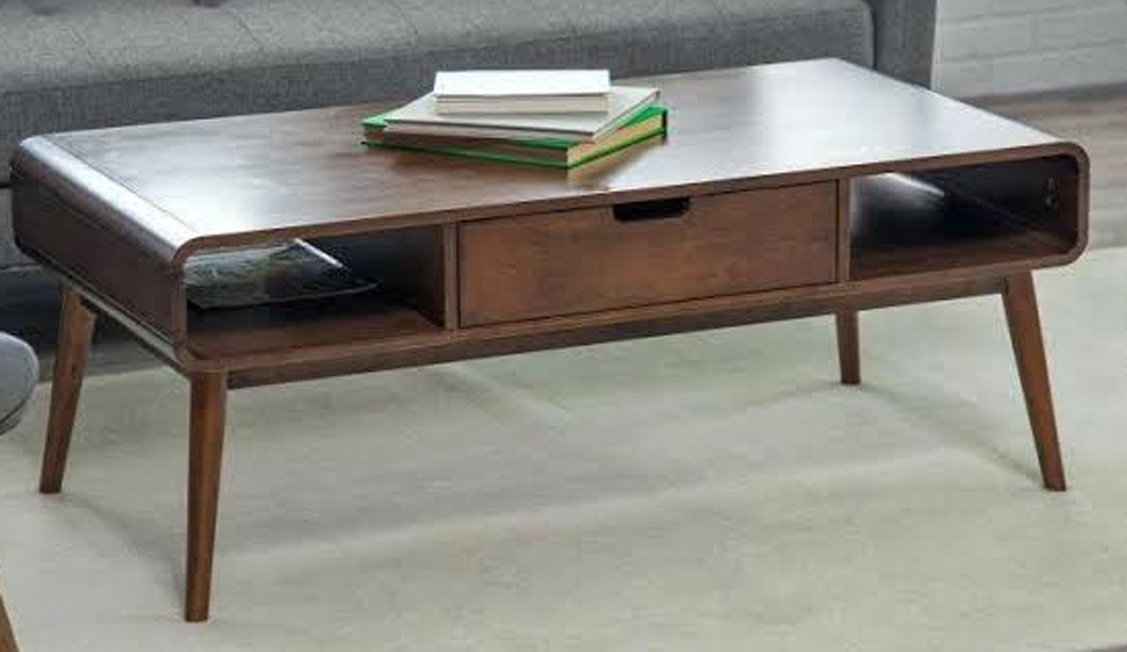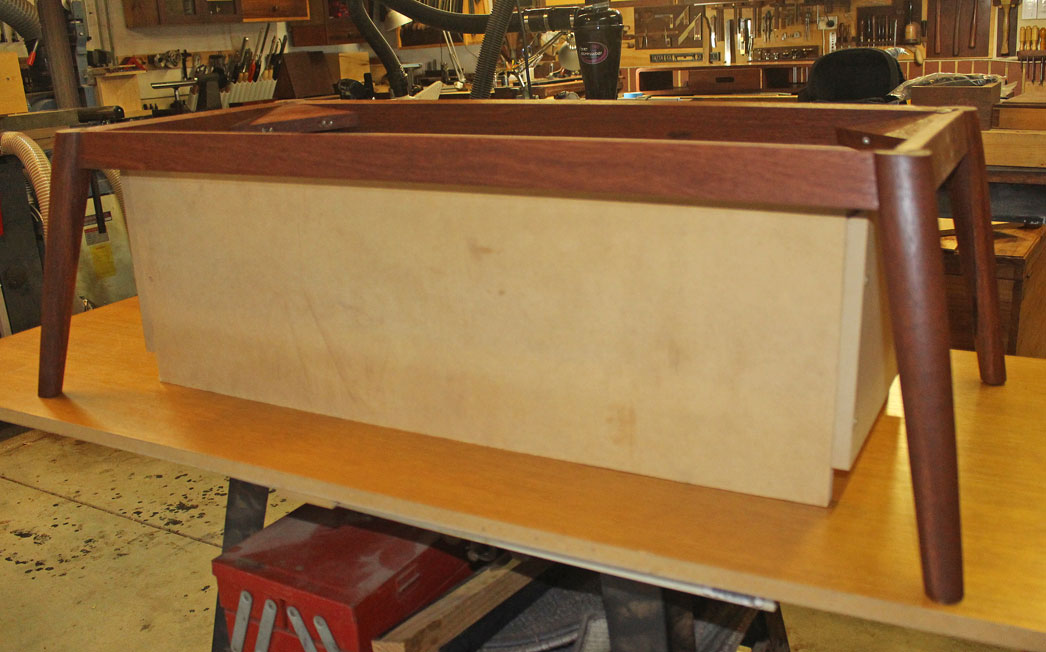
Another Coffee Table: Final
This was the model for the coffee table my nephew chose when I offered to build them a wedding present …

Let's see how we did ....
Before the coffee table was assembled from the parts, I was mindful that it would be shipped from Perth to Sydney (which is the further than New York to LA). The main concern was that the container might bounce (be dropped or be handled roughly), and the weight of the heavy Jarrah top coming down on the splayed legs might cause them severe damage. (I am not concerned about the strength of the legs for normal home use - the construction is strong. More shortly).
So, I build a table out of MDF that could be placed under the coffee table, and would take all the weight …


The top and base were connected with steel angle brackets …

Part of the strength in the splayed legs comes from the corner brackets, which act to lock in the mortice-and-tenon joinery by preventing movement. These steel angle brackets further lock in the base from any possible twisting.
The brackets are angled to 10 degrees to match the inside of the rails …

Incidentally, the best, and cheapest, anvil is this section of steel angle, the insides of which are lines with Hard Maple scrap, and then clamped in the leg vise over a leg ....

The finish for the wood - Fiddleback Jarrah for the top of the carcase and the drawer fronts, and Jarrah for the base of the carcase and base/legs - was chosen for durability. It needs to be capable of resisting water marks and heat, and still have a natural appearance - not a sit-on-top finish, such as a poly or varnish. Most oil finishes are not durable enough.
What I went with in the end was Evolution (satin), a hard wax oil by Whittle. This is a floor finish, and in the examples I saw it looked more like a waxed oil finish. The reports and reviews were highly favourable. I must say, after using it, I was completely sold. It is fantastic! The surfaces were sanded to 400 grit (Abranet), and then two coats were rubbed on with a micromesh cloth, 8 hours apart. Any residue was removed immediately. There was no grain raising that I could detect, however I did rub down the first coats with 400 grit grey mesh.
The drawer case was waxed (only) with Lincoln Furniture Wax. This is a shellac-based wax. The inside of the drawer was finished with Ubeaut Hard Shellac diluted 50% with methylated spirits (alcohol). All of the above are Australian products. The interior of the drawer was lined in leather, which was waxed with Renaissance Wax.

This is a close up of the Evolution. It is so much nicer in the flesh. Silky …

OK, to the coffee table …
The front, with the drawer (and the agonised-over-drawer-handle-pull-whatever) ..


The colour, figure, and those rounded dovetails look fantastic …

Other end …

The rear has a closed panel. At the start of the project I had planned to make the drawer run all the way through, and open from each side. On reflection, this created more problems than it was worth, and so the one side was closed in with the same panel used as a drawer front …

The Jarrah base and splayed, tapered legs …

Finally the drawer …
The drawer stop used was the same design as used in the Apothecary Chest. This is adjustable, which enable the position of the drawer front to be fine tuned …

The 10mm drawer sides are Tasmanian Oak, which I find great for this purpose as it all comes quarter sawn. It is a moderately hard wood (by Oz standards). Plywood was used for the drawer bottom, as it was inset in grooves and covered in leather. Jarrah cove moulding was made to finish.


Inside there is an inscribed brass plate for remembrance …

Regards from Perth
Derek
January 2019